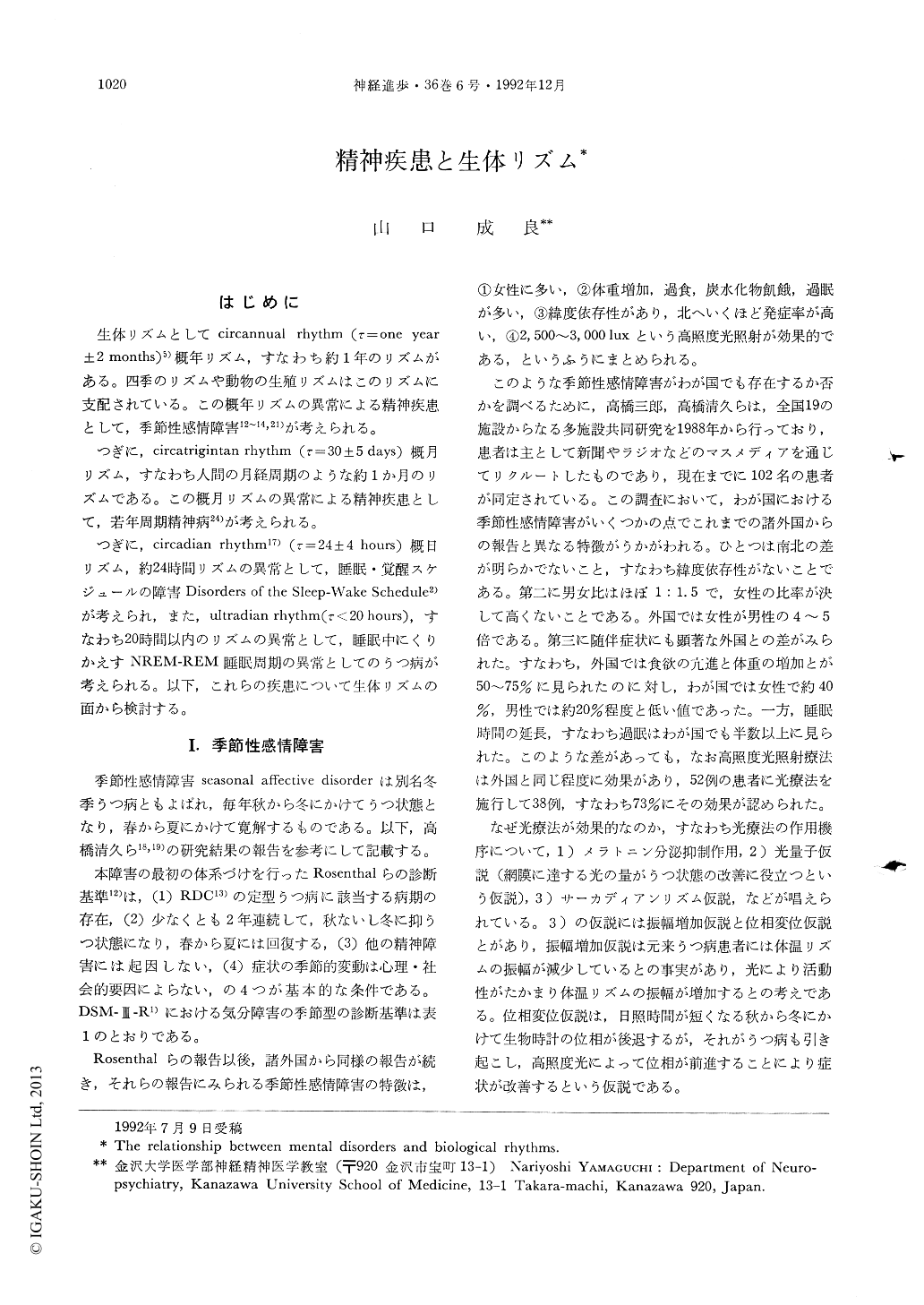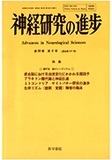Japanese
English
- 有料閲覧
- Abstract 文献概要
- 1ページ目 Look Inside
はじめに
生体リズムとしてcircannual rhythm(τ=one year±2months)5)概年リズム,すなわち約1年のリズムがある。四季のリズムや動物の生殖リズムはこのリズムに支配されている。この概年リズムの異常による精神疾患として,季節性感情障害12~14,21)が考えられる。
つぎに,circatrigintan rhythm(τ=30±5days)概月リズム,すなわち人間の月経周期のような約1か月のリズムである。この概月リズムの異常による精神疾患として,若年周期精神病24)が考えられる。
つぎに,circadian rhythm17)(τ=24±4 hours)概日リズム,約24時間リズムの異常として,睡眠・覚醒スケジュールの障害Disorders of the Sleep-Wake Schedule2)が考えられ,また,ultradian rhythm(τ<20 hours),すなわち20時間以内のリズムの異常として,睡眠中にくりかえすNREM-REM睡眠周期の異常としてのうつ病が考えられる。以下,これらの疾患について生体リズムの面から検討する。
There are some kinds of biological rhythms. The circannual rhythms are rhythms with a period of about a year. Seasonal rhythms and reproductive rhythms in some animals follow a circannual cycle. The circatrigintan rhythms are rhythms, such as the human menstrual cycle, that approximate a month in duration. The circadian rhythm is a rhythm of approximately 24 hours in length. The ultradian rhythm is a rhythm with a period of less than 20 hours.
I introduced a multicenter study of seasonal affective disorders (SAD) in Japan reported by Dr. K. Takahashi and associates as a disorder of circannual rhythms. Essentially similar findings to other previous report of SAD were obtained in Japanese cases. However, a nearly equal sex ratio, together with a lack of a strong latitude dependece of this disorder is characteristic of the Japanese SAD study.

Copyright © 1992, Igaku-Shoin Ltd. All rights reserved.


